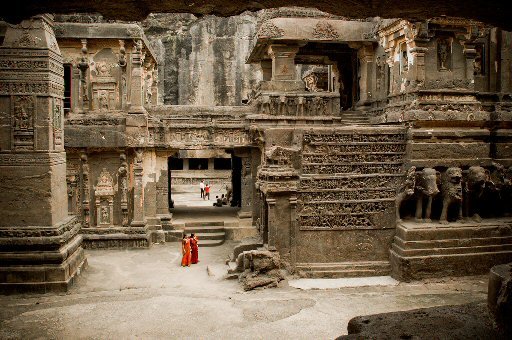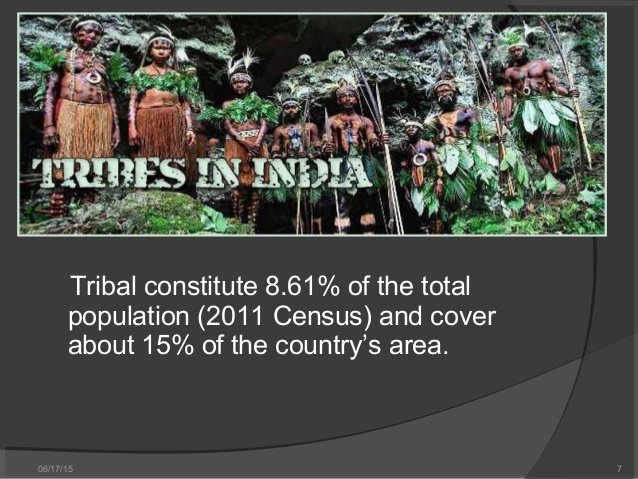Prehistoric and Primitive Life of Indians

Image Source
The myths of different lands and people including India records the legend of man's fall from a pristine state of perfection. Modern Hindus talk about the present as the Dark Age of mankind. It was as far as anyone knows preceded by three nobler periods. The first and best was the golden Age of Truth. Men knew neither disease nor want. They drudged not, neither did they spin, for this good earth bore in plenty voluntarily.
Quiet, pure, simple, upright, each man lived for thousands of years. At that point human insatiability created, men started to gather private property, to accumulate acquisitions. Life ranges wound up noticeably shorter, war, illness, poverty, and craving harrowed mankind as a result of its pass from immaculateness. The Buddhist and Jain religious books contain comparable forms.
The brahmin record, being the latest, spread out with a further theory of endless cycles. The present dark age is to end in a universal downpour. After the total decimation of all life by the flood, the earth will rise up out of the waters and a new golden age start once more, followed in time by the three different ages of dynamic rot, to end in another flood. Along these lines it was in the past, so shall it be in future cycles. This depressing perspective of silly historical reiteration is essentially a projection of the dull occasional life of the Indian village.
The October harvest is trailed by cool climate with a period of health and plenty. At that point comes dynamic scarcity, ending in a period when biting work under bad conditions is required just to prepare the parched fields for sowing. Finally, the dynamite monsoon rain floods all the land, after which the regular cycle rehashes itself for one more year of a similar sort.

Image Source
Regardless of the widespread myth, there was no unique golden age of mankind outside the imagination of later poets and priests. We know this first by interpreting historical records straightforwardly where they exist, say from 2500 BC, in a couple of spots outside India. Past that archeology needs to help interpret the past. At the point when the archeologist dives in a spot where the earth has not been bothered truly as of late, he finds a deposit in uneven layers clearly isolated from each other.
The older strata are the lower ones, with the goal that the order in time is clear. Many of these strata contain confirmation of human activity. This proof might be as substantial stays, for example, bones, a skull, or even a single tooth which can inform an awesome deal regarding the sort of human being who developed it. The bones of the animals man chased are regularly found with his own, so likewise of the animals he tamed dog, sheep, cattle, horse. It is conceivable by contrasting the layers with say that the dog was tamed long before the horse, cattle and sheep at some intermediate period.
Pottery, tools of stone, metal objects arc all in the class of things made by man, which are consequently called artifacts. In the event that the atmosphere is dry, wooden implements, bones and ivory weapons, basketwork, filaments, for example, wool and linen woven into material, oat grains, pictures or writing on papyrus are preserved, with the goal that we can tell roughly the order in which man figured out how to create these different things.
All of them were produced more than thousands of years via cautious choice and rehashed sowing of the fattest natural grass seeds. In the event that human activity stopped, all developed assortments would vanish or be supplanted by the hardier wild models in a couple of plant generations. The stratified record is a historical arrangement, any later unsettling influence, for example, a pit burrowed through the upper layers can be perceived and set aside by the trained master.

Image Source
Correlation of finds in different spots discloses to us how far a given sort of hardware, pottery, grain, was spread. Finally, modern method allows a genuinely good system of dates to be relegated by measurement of fluorine content, radioactivity of charcoal and bone, geomagnetic perceptions, occasional varieties in the development of tree rings. The past consequently reproduced backpedals for a few hundred years till we achieve scarcely human sorts, for example, Java man, Peking man, and the pre-human African Proconsul skull.
This takes us from archeology into geography, from a study of history to that of the advancement of warm blooded creatures, vertebrates, and different forms of life. In any case, all through all this, no place is any proof found of a lost golden age a state of pristine brilliance. Man did not advance uniformly or relentlessly, but rather he progressed in general, from a genuinely wasteful animal to a toolmaking and instrument utilizing creature who commanded the entire planet by his numbers dry by the changed forms of his activity, and has now just to figure out how to control himself.
Human bones uncovered after a few tens of thousands of years demonstrate that it was a terrific achievement for any Old Stone Age man to reach as much as forty years of age, far from being healthier, he endured considerably more than we do from parasites and devastating disease that abbreviated his life. The golden age, lies in the future, not in the past.
The archeologist's finds don't tell without anyone else's input how the men of some specific period actually lived. To recreate that way of life needs similar study of many diverse primitive tribes as yet making due in off the beaten path spots of this world. At that point it gradually turns out to be clear how a given set of tools was made and utilized, how the people who made them in the remote past more likely than not lived. Something can even be said of the social organization yet with less assurance.

Image Source
The very certainty that a primitive tribe in Australia or the interior of Brazil can be contemplated implies that the tribesmen have had some contact with the outside world and eventually with civilization. This must be allowed for, in light of the fact that there is no contact without change. No human gathering can stay in a fixed state for long. It is possible that they develop to some more productive form or rot by decay. The prehistoric people we want to study have vanished from the substance of the earth.
A few gatherings left descendants who cutting-edge to modern civilization, others just vanished. The few that stay in the remote corners have built up a few ideas, mental states of mind, superstitions, ritual traditions, observances that prevent them from attempting newer forms of life. Most contemporary savage gatherings have a social structure which is sufficiently unbending to discourage any advancement, however it isn't a similar social structure for all. No materialist can bear to disregard the impact of ideas upon social development.
The archeological record over such parts of the world as have been extensively uncovered shows generally the accompanying succession, Lowest, henceforth earliest are rough bits of chipped stone. These were utilized as tools, along with bits of wood and bone that have generally died. This Old Stone Age made a few moderate advances over a hundred thousand years or more in the method of stone-apparatus chipping. It was at last prevailing by the age of cleaned stone tools.

Image Source
In the middle of the two came what was called the Mesolithic Age, a term not presently in fashion, its degree and length are indeterminate. These basic strata, bearing tools just of stone were canvassed in time by different layers with stays of metal tools and metal weapons. The first generally utilized metal was copper, which can be diminished from its ores by a kiln not more productive than that required for pottery, pottery is to be found along with stone tools in the late Stone Age.
Copper is too soft to ever be valuable without working, and after that excessively brittle unless appropriately alloyed with some metal, for example, tin, which gives bronze. Since tin isn't widespread, the Bronze Age infers impressive investigation. Trade over long separations was going all out by 3000 BC or considerably prior. Bronze was, best case scenario rather uncommon and stayed in the ownership of a couple. This implied separation of society into classes.
The Bronze Age saw extensive fighting and attacks over vast separations for control of metal ores and of good wellsprings of water. In the second millennium B.C., there were various tribes on the move, with an adequate however portable food supply, who meandered the Kurasian continent. The older stream valley agrarian societies of Egypt and Mesopotamia had created city-states, monarchies, sanctuary organizations and warfare a good thousand years sooner. Such development was local and remarkable.

Image Source

References:
https://en.wikipedia.org/wiki/History_of_India
https://www.ancient.eu/india/
https://en.wikipedia.org/wiki/Peopling_of_India
https://www.importantindia.com
"Regardless of the widespread myth, there was no unique golden age of mankind outside the imagination of later poets and priests."
There is a lot of evidence already uncovered that suggests otherwise:
Watch this:
Downvoting a post can decrease pending rewards and make it less visible. Common reasons:
Submit
This might answer why;
https://steemit.com/history/@juvyjabian/the-lack-of-chronology-causes-the-difficulty-of-studying-indian-history
Downvoting a post can decrease pending rewards and make it less visible. Common reasons:
Submit
nice
Downvoting a post can decrease pending rewards and make it less visible. Common reasons:
Submit
Thanks
Downvoting a post can decrease pending rewards and make it less visible. Common reasons:
Submit
I am saving this to read for later. I'm glad to come across something like this on here. I myself, have a lot of Indian descent in me and I know that I will learn something from this
Downvoting a post can decrease pending rewards and make it less visible. Common reasons:
Submit
Very good, i like,,
Downvoting a post can decrease pending rewards and make it less visible. Common reasons:
Submit